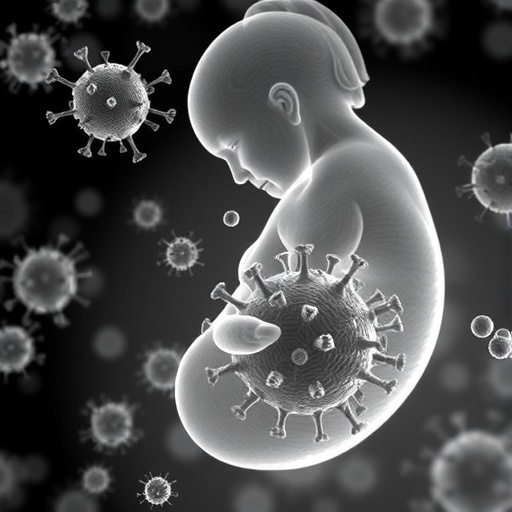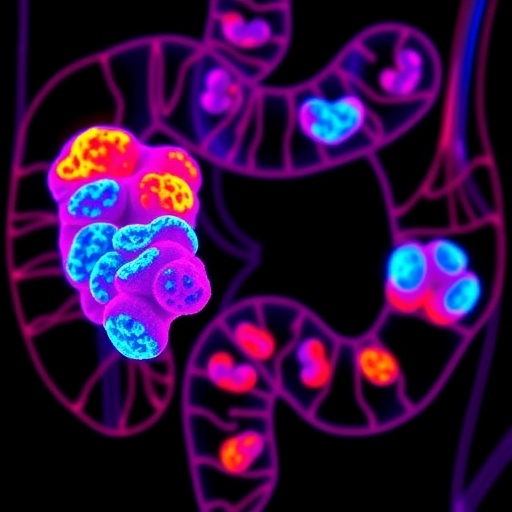
Credit: Salk Institute
LA JOLLA, CA–(October 18, 2019) A team of Salk scientists led by Professor Martyn Goulding has been awarded $14.3 million over five years by the National Institutes of Health (NIH) to create a high-resolution atlas of how the mouse brain generates and controls skilled forelimb movements, such as reaching and grasping. Knowledge generated by the grant will provide a better understanding of not only how the brain controls movement, but also how it is affected by neurological diseases and spinal cord injuries that compromise arm, wrist and hand function.
“We are grateful to the NIH for funding this exciting project, which will lead to new insights into how the brain guides action, a scientific concept we still know very little about,” says Salk President Rusty Gage. “This project will allow us to answer some of these complex questions and may lead to the development of novel therapies for patients with nerve damage affecting movement.”
“We are quite excited about this team-research program for its focus on a mechanistic understanding of the cervical spinal cord,” says Karen David, program director at the National Institute of Neurological Disorders and Stroke. “Specifically, this program will address the circuit basis of forelimb movements such as reaching and grasping–critical functions within our daily lives.”
Injuries and disorders affecting spinal cord function impact everyday life. Yet, in order to develop new treatments, scientists must understand the fundamental biology of how the spinal cord works. To address these questions, Goulding will lead a spinal cord circuit team, which will include Professor Samuel Pfaff, Professor Tatyana Sharpee, Associate Professor Axel Nimmerjahn, and Assistant Professor Eiman Azim, all from Salk, along with Professor David Golomb of Ben-Gurion University of the Negev, in Israel, to tackle the underlying biology that controls arm movement.
Within the neck lies a region of the spinal cord called the cervical spine. Brain circuits within the cervical spine control skilled arm, wrist and hand actions such as throwing a dart or playing a guitar. Very little is known about the composition and structure of these circuits. With support from this grant, the team will create a high-resolution database with information about how the neurons communicate with one another and how each neuron contributes to skilled movement. The database will also include information about the neurons’ molecular and electrophysiological properties, which will provide a better understanding of the makeup of each cell. Lastly, the researchers will develop testable predictive models of each neural loop to explore the network of interactions that occur to move a limb.
“Characterizing how these neural circuits function and are organized is a challenging project that is central to understanding how the brain works. Identifying the neurons that make up these circuits and how they interact will provide a foundation for future spinal cord research. We feel that this award recognizes the leadership role the Salk Institute has in spinal cord research, and we are particularly excited about where this project will take us,” says Goulding, a member of the Molecular Neurobiology Laboratory and holder of the Frederick W. and Joanna J. Mitchell Chair.
The Salk spinal cord circuit team includes the following faculty:
Martyn Goulding, a professor and the Frederick W. and Joanna J. Mitchell Chair, has developed and used cutting-edge genetic approaches to map spinal cord circuitry and determine the contribution specialized neurons make to locomotion and fine motor control. He also studies how sensory modalities such as touch are used to control movement.
Samuel Pfaff is a professor, Howard Hughes Medical Institute Investigator and holder of the Benjamin H. Lewis Chair. The Pfaff laboratory is a leader in the study of motor neurons; the lab is widely recognized for the identification of the genetic pathways that allow motor neurons to develop and grow axons to muscles. His team’s recent work has exploited its unique knowledge of motor neuron genetics to develop novel labeling tools that help reveal more about both motor circuitry and disease processes.
Tatyana Sharpee, a professor, is working to understand the control principles for the nervous system. Specifically, she is uncovering how animals sense and adapt to their environment as well as make predictions and decisions. To do this, she applies mathematical strategies–like statistics and probability models and theory of dynamical systems — to understand how signals propagate among the brain’s billions of neurons.
Axel Nimmerjahn, an associate professor, has spearheaded the development of new microscopy techniques to visualize the functional dynamics of cells and their interactions in the healthy and diseased central nervous system. Additionally, he has created new tools for cell type-specific staining and genetic manipulation and for analysis of large-scale imaging data.
Eiman Azim, an assistant professor and the William Scandling Development Chair, uses a multidisciplinary approach to identify how neural circuits control skilled movements. He takes advantage of genetic and viral tools, anatomical analysis, electrophysiological recording, imaging and detailed motor behavioral tests. His work seeks to uncover how the brain and spinal cord enable speed, precision and dexterity and lays the groundwork for better treatment and recovery of motor function after injury and disease.
###
This study is supported by the NIH BRAIN Initiative (1U19NS112959-01).
About the NIH:
The NIH is part of the U.S. Department of Health and Human Services and serves as the largest biomedical research agency in the world.
About the Salk Institute for Biological Studies:
Every cure has a starting point. The Salk Institute embodies Jonas Salk’s mission to dare to make dreams into reality. Its internationally renowned and award-winning scientists explore the very foundations of life, seeking new understandings in neuroscience, genetics, immunology, plant biology and more. The Institute is an independent nonprofit organization and architectural landmark: small by choice, intimate by nature and fearless in the face of any challenge. Be it cancer or Alzheimer’s, aging or diabetes, Salk is where cures begin. Learn more at: salk.edu
Media Contact
Salk Communications
[email protected]
858-453-4100
Original Source
https:/





